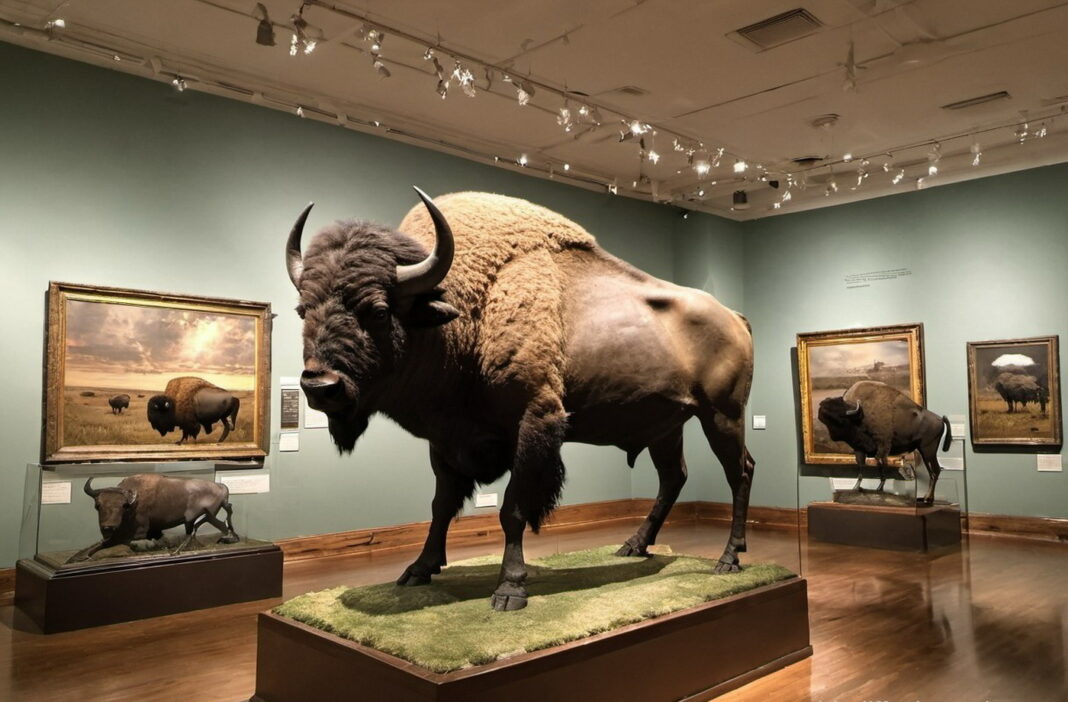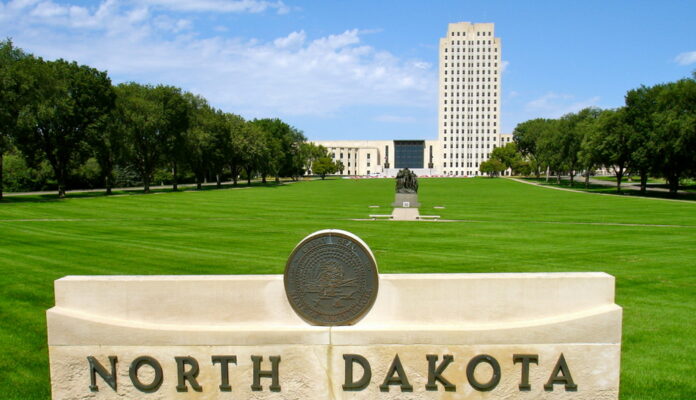North Dakota, often referred to as a state with provincial manners, offers a simple and steady life without emotional outbursts or surprises. Yet, therein lies the charm of the region! For locals, “yesterday” hardly differs from “tomorrow,” fostering a particularly strong connection between generations. In this state, traditions are cherished firsthand, and lessons from the past are respected.
Brief information about the state:
- Abbreviation: ND
- State capital: Bismarck
- State population: 780,523 people (data as of 2021, ranks 48th in the United States in terms of individual state populations)
- Largest city: Fargo (administrative center of Cass County, 125,804 people)
- State area: 183,272 km² (ranks 19th)
- Official website: nd.gov
Attractions of North Dakota
Most guidebooks suggest starting the exploration of North Dakota with Theodore Roosevelt National Park. It serves as a miniature representation of the region, showcasing all its main landscapes, wildlife, and the rugged character of the place. The park has remained virtually unchanged for many years, preserving its essence from the times when the famous naturalist and 26th President of the United States wandered its trails.
In the National Buffalo Museum, visitors can take a photo with one of the world’s largest monuments – a concrete bison, with its live counterparts grazing peacefully at its feet. The museum’s exhibits and exhibition halls tell the story of the region’s fauna, with a special emphasis on these wild bulls as a unique symbol of the American West.
In close proximity to the museum lies another colorful spot – Frontier Village, recreating the era of colonists arriving in the New World. Visitors are transported back in time as they stroll through the historic streets, visit the barber, send postcards from the post office, or take a ride in a stagecoach.
Learning about the lives of the first European settlers allows one to also delve into the culture of the Native Americans. Near Stanton, on the sites of former Mandan and Hidatsa settlements, reconstructions of their villages are located. Here, daily life is demonstrated, and numerous thematic festivals and craft shows take place. Those who have attended such performances describe them as spectacular, unique, and authentic.
Flowing through the territory of North Dakota is the mighty Missouri River, with a total length of 3,767 km. The river passes through 10 American states and 2 Canadian provinces.
History of the State
For many centuries, the lands of the “northwest center” belonged to Native American tribes. Some led a nomadic way of life and engaged in hunting, while others chose a sedentary lifestyle, cultivating beans, corn, and pumpkins, and raising livestock.
One of the most numerous tribes was the Sioux people, or as they called themselves, the Dakota. Over time, this name, which has a profound meaning translating to “peaceful allies,” transformed into the symbolic name of the thirty-ninth American state.
The first European to show interest in this region was the Franco-Canadian Pierre de La Verendrye. He led an expedition here in 1738. The enterprising gentleman was drawn to the fur trade, specifically the opportunity to profitably exchange fur with the indigenous peoples.
Spain and Great Britain also expressed their claims to the lands of North Dakota. None of them encountered resistance from the Indians. They sought to maximize the benefits from the situation and traded with each country, maintaining ties with the colonies. The Mandan tribe assumed the role of intermediaries.
John Evans went the furthest in establishing diplomatic relations with the indigenous population in 1795-1797. He became so close to the locals that he even received an invitation to spend the winter in one of their settlements. The explorer took advantage of the opportunity and compiled a very detailed map of the region.
His work was continued by members of the Lewis and Clark expedition, who founded the first European settlement, Fort Mandan, in 1804 (named after the aforementioned Indian tribe).
In 1818, part of the land, including the future North Dakota, became part of the United States as part of the Louisiana Purchase. But the young country did not stop there and continued to expand its sphere of influence. In 1861, the Dakota Territory appeared.
And already the next year, a powerful stream of settlers poured in, as the government stimulated them by selling land plots for just $10 for 65 hectares. This did not sit well with the local Sioux tribes and quickly escalated into armed conflicts. The indigenous uprising was only suppressed in the 1870s.
On November 2, 1889, the Dakota Territory twice gained statehood, splitting into North and South. North became the 39th state, and South, on the same day, the 40th. The Missouri River became the boundary between the newly formed administrative units.
Interesting Facts about North Dakota
1. There are 2 U.S. Air Force bases located in the state – Minot and Grand Forks.
2. Among all the flowers, sunflowers are the most commonly found on this land. However, the wild rose was chosen as the state flower. Locals have no answer to the question: “Why did this happen?”
3. North Dakota holds the official record, set on February 17, 2007, for the largest number of snow angels made in one place simultaneously. 8,962 people participated in this fun winter activity, gathering at the state Capitol. They made it into the Guinness Book of Records, surpassing the previous record held by the University of Michigan.
4. Inventor of the camera, David Henderson, was from these parts. The designer took 2 syllables from the state’s name, rearranged them, and added the letter “K” – resulting in “Kodak,” which happened in 1887.
5. In 2013, North Dakota held the honorary title of the “Happiest State in the USA,” surpassing even Hawaii, which had held the title for years.
6. Bison were endangered for a long time. In 1900, a census was conducted, revealing that there were less than 600 individuals of this species left, although countless herds roamed the plains before. Today, the population has been practically restored.
7. About 50% of all grain in America is grown in this state, and the number of cattle is almost twice the permanent population.
8. There is a law in North Dakota that no one can be arrested on July 4th, as this day is a national holiday.
Major Cities
The state of North Dakota consists of 53 counties and 52 cities. The leaders in terms of population are the following:
- Fargo ≈ 126,000 inhabitants
- Bismarck – administrative center of Burleigh County, 75,129 inhabitants
- Grand Forks – 54,243 inhabitants
- Minot – 43,236 inhabitants
- West Fargo – 38,654 inhabitants.
The outsider, occupying the last position, is the tiny town of Gwinner. Its area is only 3 km² with a population of 700 people.
